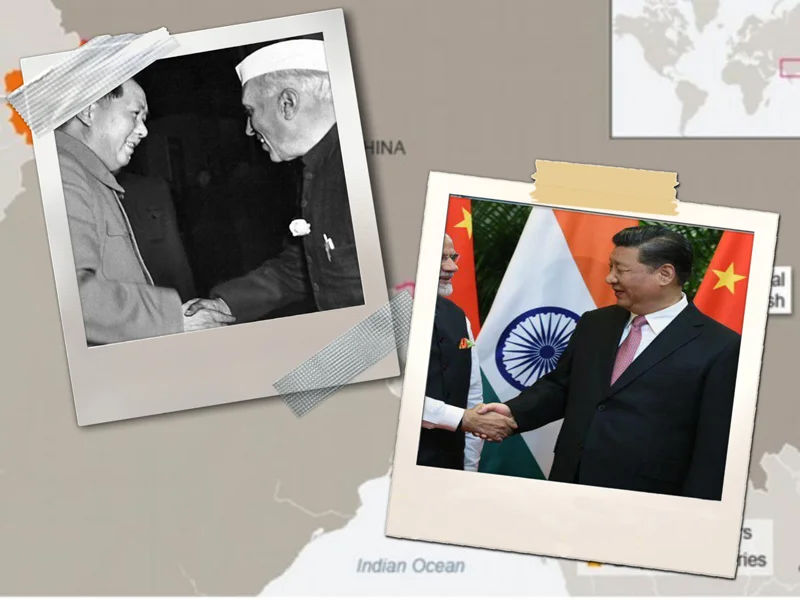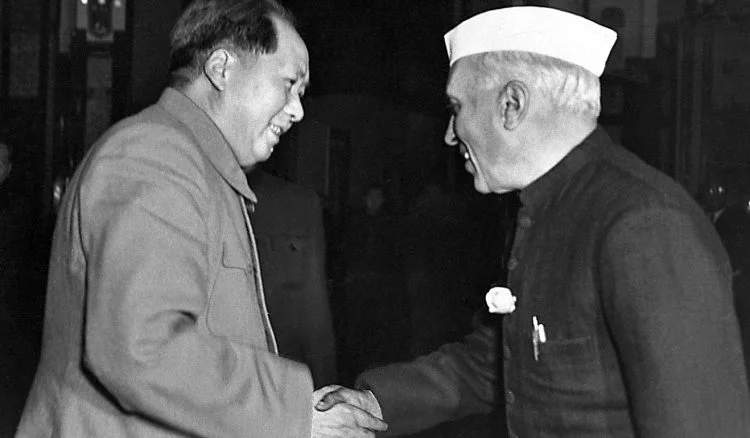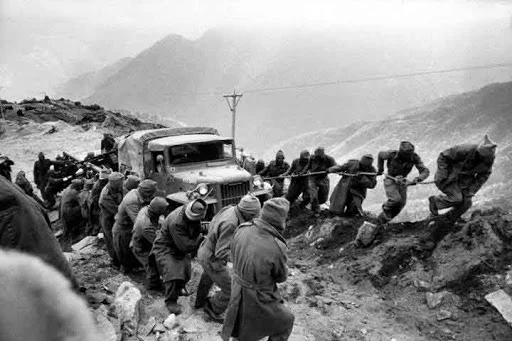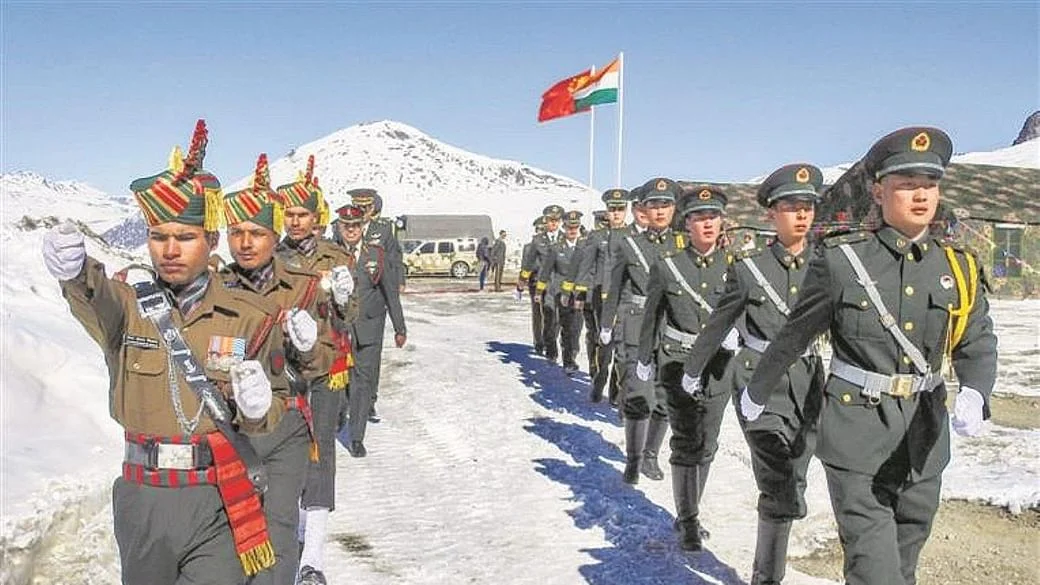
Behind the fresh LAC faceoff is the seven-decade-old fraught history dominated by dragon’s menacing advances and territorial ambitions.
By Swati Joshi
A video of a family throwing their television from their balcony as a sign of protest against China is making rounds on social media. Considering everyone is not so enthusiastic in giving up their well-earned Chinese products, the family has not set an example but it is an act that just tends to become a source of entertainment for many.
While the television was brutally attacked by sticks from the neighbors, it will be interesting to know from which mobile phone the video was shot. If it was a Chinese model, then it is quite ironical for everyone who is just applauding the act and tweeting about it through their Made in China phones.
The old clichéd “Hindi Chini bhai bhai” slogan apart, the relationship between the two is not very healthy and the continuous face-offs between them have made it sourer.
To understand the relationship between India and China, one has to go back to the time in the late 1940s when both emerging Third World Countries- the newly independent India and the rising communist China were planning to make their presence in the world.
The entire Sino-India border including the western Line of Actual Control (LAC), some disputed section in the middle and the McMohan Line in the east is 4,056 km which traverses through the union territory of Ladakh and four states- Uttarakhand, Himachal Pradesh, Sikkim, and Arunachal Pradesh.
First Dispute: Tibet
The first territorial issue faced by India after independence with China involved Tibet.
Tibet lies on the Tibetan plateau on the northern side of the Himalayas between India and China.
On April 29, 1954, the two countries signed an agreement that sanctioned China’s control over Tibet. The Indian troops stationed at Yatung and Gyantse in Tibet for protection of Indian traders and pilgrims en route to Lhasa were withdrawn and the Indian postal, telegraph, and telephone facilities in Tibet were handed to Beijing.
However, the two sides did not decide on the demarcation of the Indian-Tibetan border.
In the same year, the two countries signed the Panchsheel Treaty – five principles of peaceful co-existence under the leadership of Prime Minister of India Pt. Jawaharlal Nehru and Chinese Premier Zhou Enlai, during the latter’s visit to Delhi.
The five principles of coexistence mentioned in the Treaty included respect for territorial integrity and sovereignty, non-aggression, non-interference in internal affairs, equality and mutual benefit, and peaceful coexistence.
In 1955, Beijing decided to set up a Preparatory Committee for setting up Tibetan Autonomous Region, that marked the end of traditional Tibetan society and the transfer of power to the China Communist Party (CCP) from the theocratic government under the Dalai Lama. This move by China created unrest in Tibet.

In 1956, the People’s Liberation Army (PLA) annihilated monasteries in Eastern Tibet where local insurgents had taken refuge. This action by China worsened the condition in Tibet and the Dalai Lama pressured Beijing to resolve the condition otherwise he would stay in exile in India.
After negotiations, the Dalai Lama came back to Tibet.
After the Tibetan Uprising in 1959, India had given asylum to the Dalai Lama which did not go well with the Chinese. China considered this move by India as a threat to its rule over Tibet. Even Mao Zedong, the former chairman of the People’s Republic of China (PRC) stated that the uprising in Lhasa was caused by India.
Frontier Tensions
Amidst the Tibet issue between China and India, other border issues also came into light. The western and eastern non-demarcated borders received troops from both sides.

In 1960 Zhou Enlai suggested that if India gave up its claim over Aksai Chin, China in return would drop its claim on Arunachal Pradesh but Nehru didn’t agree with it saying China had no rule over these areas. India started following ‘Forward Policy’ and sent troops and patrols to the disputed areas.
Indian leadership was sure that China would not attack India. But when China attacked India in 1962, the unprepared Indian army was outnumbered by PLA.
The Sino-India war which went for a month in both eastern and western fronts resulted in the loss of life and property. It is estimated that 3000 Indian soldiers were killed and approximately 1000 were injured.

Between 1962 and 1969 the relation between India and China was cold. Beijing’s political and military support to Islamabad further worsened the condition.
The relations between India and China further crumbled in June 1967 when two Indian diplomats were expelled from Beijing on alleged charges of “espionage activities”.
In the same year on September 11, Chinese troops attacked Indian troops on the Sikkim border across Nathu La and opened fire. 88 Indian soldiers lost their lives and more than 300 Chinese soldiers were killed. The attack ended on September 15, 1967 after repeated Indian protests and proposals for a ceasefire.
On October 1 that year, China again fired heavily on Indian troops in Cho La which ended on the same day.
New Era
The relationship between India and China was officially re-established in 1979 when Atal Bihari Vajpayee, the then foreign minister of India, visited China.
During his visit, Vajpayee brought the contentious border issues with the Chinese leader who in turn told him not to bring the issue for discussion. Following this many political leaders visited China which started a new era of India-China relations.
According to a research paper by journalist Manoj Joshi, “Since the early 1980s, both sides have held multiple rounds of talks to draw up a mutually acceptable LAC and resolve their border dispute. However, even though they have inched towards the goals, they have failed to follow-through.”
Renewed Face-offs
India and China had many face-offs but the one at Doklam in 2017 lasted for more than two months.
Doklam lies at the trijunction between India, Bhutan, and China and is surrounded by the Chumbi valley of Tibet, Bhutan’s Ha Valley, and Sikkim.
The Doklam region is claimed by both Bhutan and China and even after efforts from both the countries, the dispute has not been resolved.
The dispute worsened in 2017 when China started constructing a road in the area. Indian troops supported Bhutan and objected to the construction activities by Beijing resulting in a standoff.

Doklam being located close to the Siliguri corridor that connects mainland India with its north-eastern region, is important for India for security reasons.
In recent years, China has been increasing its troops in the Chumbi valley. Since both Indian and Bhutanese troops are at the higher ground around the valley, they are at a much advantageous position, unlike China.
If the Chinese had captured Doklam they would be at a commanding position of Chumbi valley and Siliguri corridor.
Fresh Faceoff
The current dispute between India and China along the LAC is one of the worst rows between the two countries post-1962.
At least 20 Indian soldiers were killed on June 15 in the Galwan valley which became the first casualties in 45 years along the border. Indian troops were accused of crossing the border twice “provoking and attacking the Chinese personnel”.
There are reports of Chinese casualties but there is no confirmation from the officials.

The first confrontation between the Chinese and Indian troops happened around the Pangong lake. The Sirijap range overlooking the lake has many cliffs which are numbered one to eight. India claims the LAC up to Finger 8. Chinese troops come from behind Finger 8 cliffs and can be seen by the Indian side only when the Chinese troops are at Finger 6.
To increase its visibility over the Chinese troops, the Indian side decided to build an observation point at Finger 8 that would help Indian soldiers to intercept Chinese soldiers, as soon they entered the area from Finger 8.
The Chinese PLA objected the construction and put pressure on India to halt the work, due to which a standoff happened between the soldiers of two sides on May 5-6 but it was controlled as both the armies stuck to protocols to resolve the issue.
The second dispute took place over a bridge build by India in the Despang Plains across the Galwan rivulet. PLA was beefed up at patrolling points 14, 15 and 17. The bridge is supposed to give the soldiers access to Daulat Beg Oldie, the last military post south of Karakoram Pass.
The bridge is now functional amid the ongoing tension between the two countries.
Follow this link to join our WhatsApp group: Join Now
Be Part of Quality Journalism |
Quality journalism takes a lot of time, money and hard work to produce and despite all the hardships we still do it. Our reporters and editors are working overtime in Kashmir and beyond to cover what you care about, break big stories, and expose injustices that can change lives. Today more people are reading Kashmir Observer than ever, but only a handful are paying while advertising revenues are falling fast. |
| ACT NOW |
| MONTHLY | Rs 100 | |
| YEARLY | Rs 1000 | |
| LIFETIME | Rs 10000 | |












